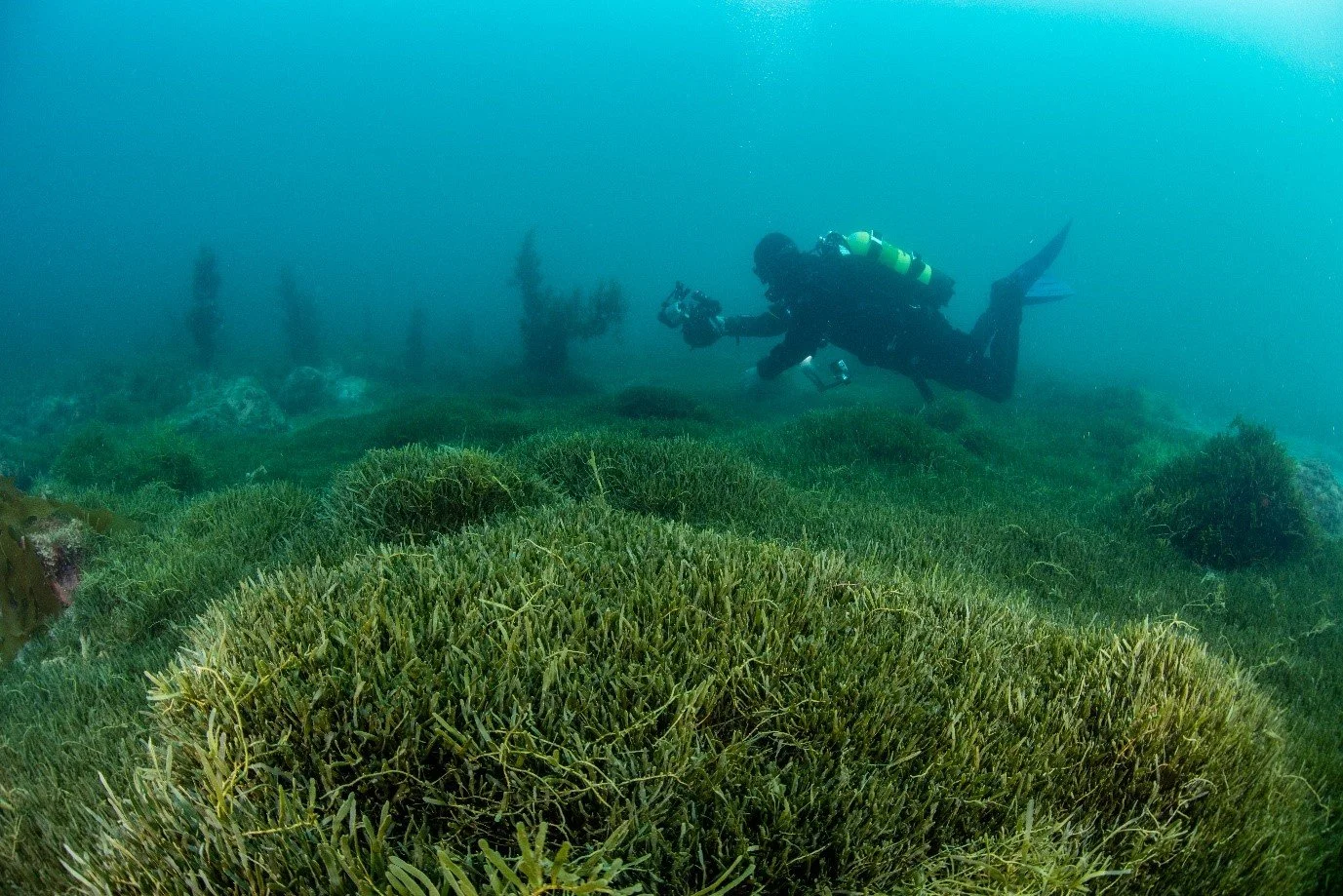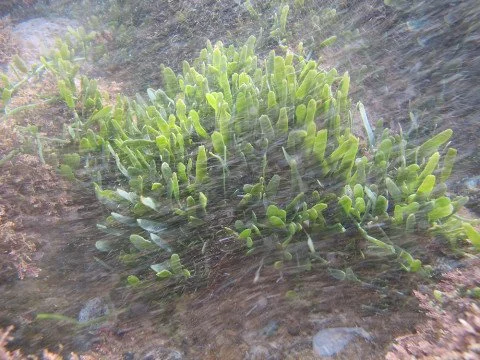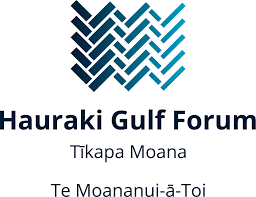
Marine Monitoring
The Surveillance of biological threats to our Marine Ecosystem
Waiheke’s Exotic Caulerpa - the beginning
Exotic Caulerpa was confirmed at Waiheke Island following a discovery on 29th July 2023 by the project survey crew of Ngāti Paoa ki Waiheke using an underwater drone operated by Logan Marine - more images were produced following work by contracted divers Submerged Environment on 2nd August 2023 which helped to confirm the discovery.
Underwater Remote Operated Vehicle and diver surveys are ongoing in 2024 to assist MPI/Niwa with determining the size and areas impacted.
Activity restrictions are in place on Waiheke’s Northern coastline to help prevent the spread to other popular recreational area’s and important habitats.
Surveillance Tracking by WMP & NIWA
*Due to the limitations of Google maps the data is spread over separate links
** July 2024 - Government has commissioned a new GIS portal to hold as much mapped data as possible in a single place. This is expected to be live very soon and will include the earlier WMP survey’s.
Exotic Caulerpa news updates
Pre-discovery at Waiheke Island;
Being vigilant and alert towards biological threats and opportunities
Waiheke ki uta, Waiheke ki tai, Waiheke ki tua - Waiheke here, to the sea and into the future
Guided by the common ground commitments formed during the Future Search of 2020, vigilance and a deeper understanding towards marine biosecurity in our region is interlinked with the project goals. Utilizing three forms of knowledge and the project's Ngāti Paoa ki Waiheke’s lead, in-water Pipi ~ sub projects we are in a strong position to assist with surveillance, education, monitoring and removal (if necessary) of invasive marine pests.
The Regenerative Diving programme, annual Kōura dive surveys, Kelp Gardeners and community Beach Cleans are examples of providing community participation and opportunities for building a greater defense network.
A diver photgraphs a dense area of Caulerpa Brachypus at Aotea Great Barrier - photo from MPI
Exotic Caulerpa - the story so far - early 2023
Whilst there has been no sign of it on Waiheke’s coast so far, the discovery of the Exotic Caulerpa seaweed species in four locations around Aotearoa/New Zealand is very concerning. If it were to arrive here it would seriously hamper the mahi of the project, suck away scarce resources and have a long tail of detrimental outcomes for our people and livelihoods.
The spread of exotic caulerpa, an invasive seaweed, is of great threat to Tīkapa Moana and its communities. Known to be present at Aotea Great Barrier and Ahuahu Great Mercury Islands since 2021 and most recently found in the Bay of Islands, and now Kawau Island - the next most likely place for its spread being the nearby coastlines and populated islands favoured for shelter and anchorage like those surrounding Waiheke Island.
Read a summary of the exotic caulerpa threat presented by WMP in April 2023
MPI (The Ministry of Primary Industries - Manatū Ahu Matua) began their response in July 2021 and placed a CAN (Controlled Area Notice) at Aotea Great Barrier and Ahuahu Great Mercury Islands - more recently a CAN has been placed in the Bay of Islands. These include zones marked with buoys to prevent gathering of fish and kaimoana as well as the anchoring of all craft designed to reduce the risk of this exotic weed being transferred to other areas on equipment.
Waiheke Marine Projects Steering Group discussed the potential implications of an incursion at Waiheke and conducted discussions with Biosecurity NZ and Waiheke’s Local Board throughout 2022.
Whilst working to further understand the threat, in November WMP formed a local panel and requested Biosecurity NZ prepare a contingency plan (with WMP participation) to be ready for a rapid local removal and eradication response whilst beginning a surveillance programme.
ROV deployed by Logan Marine in late 2022 at a popular Waiheke ancorage
The beginning of surveillance on Waiheke Island
Early in the Aotea Great Barrier discovery time, MPI using NIWA divers conducted checks in selected sites around Waiheke and nearby islands without discovering exotic caulerpa.
In December 2022, Hauraki Gulf Forum contributed a grant to Hauraki Gulf Conservation Trust for WMP to begin marine monitoring and surveillance to detect exotic caulerpa. Two Remote Operated Vehicle (ROV) surveys were undertaken by Logan Marine Projects, one in January and one in March 2023. The area’s were on the Northern coast and selected for their higher frequency anchoring potential. Tangata whenua were crewing the survey vessel on both survey days enabling capability development in marine monitoring techniques and consequent inspiration to bring mātauranga Māori to marine monitoring moving forward.
The underwater ROV is capable of high-quality video recording of the sea floor and runs a 50m transect, each transect with a GPS coordinate. Over 5,000m2 of seafloor has been surveyed to date. Results from the two ROV events produced high quality video imagery that will allow WMP to make the coverage data accessible on a digital map.
Thankfully no exotic caulerpa was observed however the very limited area covered was far from being sufficient to be considered a comprehensive survey.
All the same, both Biosecurity NZ and Auckland Council advised they were impressed with the imagery collected and have requested the data be shared with their agency databases.
Caulerpa Brachypus has runners with waving up-right paddles
If you discover a suspected Exotic Caulerpa example, please
Take a photo
Record the location, date & time - GPS position if possible
Phone 0800 80 99 66 (MPI hotline)
If you can, place everything in a sealed bag
Don’t return it to the sea
Check your anchor, chain, windlass and anchor-well
Check your fishing gear - hooks, reels, and rods
Check your Dive gear, belts, tanks, wetsuits, fins and spear-guns
Wash everything on land using a friendly detergent
MPI have produced a video to help identify this seaweed - view it here
Proposal to remove - 2022
Waiheke Marine Project has been encouraging the formation of a contingency plan which could be executed as soon as the smallest sign of Exotic Caulerpa appears. At the core of this suggestion is a request to remove any biomass in a speedy and safe way before it becomes logistically and financially tougher to address and before it can impact a marine environment that is currently in focus for increased protection and restoration - In the prior year and for the eventual recovery of kōura tipa, kutai & pāua a Rāhui was placed by Ngāti Pāoa (January 2021)
Following a removal process at applicable scale, ongoing monitoring and spot removal will be key and this is something that WMP with its ‘people in the water’ activity can contribute volunteers toward whilst helping to target eventual eradication.
Exotic Caulerpa overseas
International experience and action research with the caulerpa genus has shown that early detection is critical to frontend effective removal and eradication. Thus, the Waiheke Marine Project and Ngāti Paoa ki Waiheke (NPKW, the mana whenua rōpu guiding the WMP) decided to proactively learn and prepare for early detection.
Southern California Caulerpa Action Team (SCCAT)
The invasive marine alga Caulerpa taxifolia was discovered June 12, 2000, in California at Agua Hedionda Lagoon
Field containment and treatments began 17 days after the discovery due to:
timely identification and notification of the infestation;
the proactive staff of the San Diego Regional Water Quality Control Board who deemed this invasion tantamount to an ‘oil spill’, thus freeing up emergency funding;
the mobilization of diver crews already working at the site.
Read more in the presentation here
Caulerpa info from other regions and agencies;
Note: this is not a complete list and will be added to as knowledge of efforts to combat Exotic Caulerpa grows
Aotea Great Barrier Island - Motairehe Marae
Aotea Great Barrier Island - Aotea Great Barrier Envionmental Trust
Kawau Island - Ngāti Manuhiri
Ahuahu Great Mercury Island - Ngāti Hei
Te Rāwhiti Inlet, Bay of Islands - Northland Regional Council
Other threats
Exotic Caulerpa is unfortunately not the only threat we face in Tīkapa Moana/Te Moananui-a-Toi. Since 2005, Biosecurity NZ reports having detected more than 360 introduced species in Aotearoa/New Zealand of which about half have been able to establish themselves. They have required substantial responses and impacted the environment, marine and aquaculture industry, recreational and customary users.
Examples of current species causing concern are;
Diseases of Fish, Crustaceans and Shellfish
Aquarium Caulerpa
Wakame/Undaria
Mediterranean Fan worm
Asian Clam
Asian Paddle Crab
Chinese Mitten Crab
European Shore Crab
Northern Pacific Seastar
Australian Droplet Tunicate
Speckled and light-bulb ascidians
Clubbed Tunicate/Leathery sea squirt
Pyura sea squirt
Whilst Waiheke Marine Project does not have the resources to address all of these threats it does aim to collaborate with Auckland Council, MPI & Biosecurity, other agencies and nearby communities to avoid their effects in whatever way it can.
Thanks for supporting the first ROV survey’s at Waiheke Island.




